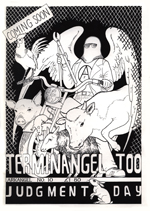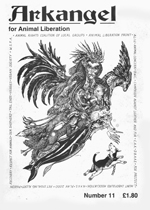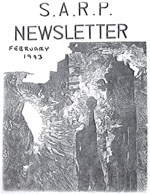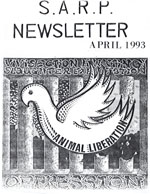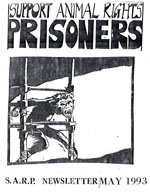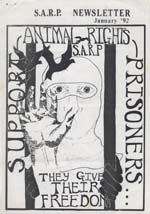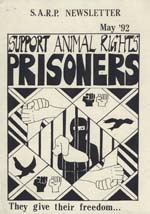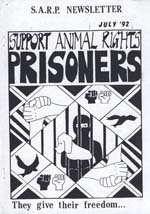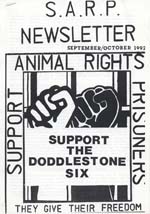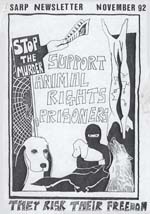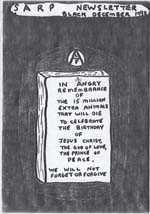The Archives
-
Arkangel, Periodicals
Arkangel #10-11
07.03.14 | PermalinkArkangel #10-11 (1993-1994. London, England.)
The early 1990s were a tumultuous time for the movement in England. Hunters began hiring professional security services to beat and harass saboteurs, the violence became so extreme that when Tom Worby was murdered by a hunt masters vehicle, the hunters nearby laughed and mocked his death. The hopefulness of the 1980s was fading away, and campaigners were becoming more hardened, which in turn led to a decline in public support as groups like the Justice Department began sending out small mail bombs. Many organizations were mired in infighting over strategy and issues of class and race. And then there was the problem of repression. Scotland Yard’s Animal Rights National Index had gathered detailed profiles on over 21,000 animal liberationists by 1990, and their spying on the movement was only set to intensify.
Through it all a dedicated core of individuals forged ahead and took animals from places of abuse, educated others about the plight of non-humans, and spread the message of compassionate action across oceans and artificial borders. Arkangel tells the story, and we are happy to continue our posting of the complete set here on TALON.
…
-
Periodicals
S.A.R.P. newsletters year 3
10.25.13 | PermalinkS.A.R.P. Newsletter #12-15 (1993 – Northampton, England)
Only a few short years after reforming Support Animal Rights Prisoners, the contributors to the project (primarily Barry Horne) threw in the towel. Their raison d’être was being fulfilled by the ALF SG newsletters, and Barry felt as if the group wasn’t having the unifying, inspirational impact that he had hoped for. The final issue, mostly written by press officer Robin Webb, starts off light and positive, but ends with an angry missive from Horne accusing most activists of being mere radical t-shirt collectors rather than actual radicals. Across the span of decades and beyond even his own death, this stab at those unwilling to fight for liberation still hits its mark. It is a sad ending to an information packed publication, but not every issue of this last year of SARP is so intense. Tiny fragments of our history fall off these pages like gold dust- collect them together and you have a treasure. Barry might have died on hunger strike, but he did not leave us behind. His words and actions will continue to remind us where we came from, and for whom we fight. Rest in peace, comrade, and thank you for all you have given us…
…
-
Campaign newsletters, Periodicals
Support Animal Rights Prisoners Newsletters: Year Two
07.30.13 | PermalinkS.A.R.P. Newsletter #6-11 (1992 – Northampton, England)
One of the big frustrations of working on the TALON site is that the materials we archive contain so much information it becomes difficult to organize and contextualize it all. Our posting of the Barry Horne SARP newsletter revival has made this sense of frustration more distinct than ever.
1992 was an eventful year for the movement: Mike Hill was murdered by hunter Alan Summersgill, the Doddlestone six were arrested protesting that murder, in North America Darren Thurston was arrested, Ronnie Lee was released, Kieth Mann was on remand and just about to escape from prison… This is just the tip of the iceberg as far as the significant events that took place over twelve long months twenty one years passed. We could spend pages discussing how these incidents shaped the future, how recent revelations about police informants in the UK have changed our understanding of old arrests, and so on. Unfortunately there is no time to pull at all of these strings- but the SARP newsletters certainly will provide inquisitive readers with many threads of their own to pull. From details of Operation Fox to “Laugh Along with the ALF,” each newsletter if filled with intriguing bits of our collective history.
…
-
Campaign newsletters, Periodicals
Support Animal Rights Prisoners newsletters: Year One.
06.17.13 | PermalinkS.A.R.P. Newsletter #1-5 (1991 – Northampton, England)
After a brief existence and quick demise in the 1980’s, the Support Animal Rights Prisoners organization was re-founded by Barry Horne and some friends in 1991. At the time Barry was imprisoned for possession of incendiary devices, but he never let incarceration keep him from participation in the movement. So, using a prison typewriter, he set to work writing the SARP newsletters. There are claims in the first issue that the material in SARP was written by a committee of five volunteers, but information we have received from reliable sources suggest that in actuality Barry wrote every issue of SARP except for the final issue, which was written by ALF Press Officer Robin Webb.
Barry was one of the most dedicated activists our struggle has ever known, but it would be a disservice to him to strip him of his humanity by pretending that he was without error. There are some poorly examined ideas in the pages of SARP that deserve measured critique, most especially that animal rights activists must, in all instances, preserve “unity.” Calls for unity are often used by those guilty of the most destabilizing behaviors as a way to avoid criticism for their own complicity in pushing people apart. During the era that SARP was being published there were concerted efforts by organized racists to join the movement, for car and postal bombings to be supported, and so on. Under such conditions total unity wouldn’t exactly be a good thing, right?
But for every weak idea presented in the pages of SARP, there are also beautiful moments that give voice to our imprisoned comrades, that remember our dead, and that call for nothing less than a revolution to liberate non-humans from the tyranny of the human species. Barry wrote with an intensity and single minded dedication that reminds us of just how precious each second spent fighting is, and how we must stop wasting those ticks of the clock. To Barry, life, and even death, should be utilized battling the scourge of speciesism. These newsletters are Barry’s voice ringing out from decades past, telling us to ACT NOW in solidarity with the animal nations.
…
-
Arkangel, Periodicals
Arkangel 8-9
12.10.12 | PermalinkArkangel #8-9 (1992. London, England.)
After serious problems with police raids and repression, Arkangel managed to produce two issues in 1992. The focus of the magazine was still the networking of local grassroots organizations and opinion pieces by members of the movement, but some wonderful morsels of history pop up between these covers. Beyond the charm of finding out where the graphics that we’ve been reprinting forever come from, you will also learn about the early days of the McLibel case, how the British government prepared for Ronnie Lee’s release from prison, and many other interesting tidbits.
What was of greatest interest to me, however, was a short article in issue #9 written by Sue Smith. Sue is an unsung hero of the animal liberation movement, one of the founders of the Band of Mercy, and an original ALF activist. She was never caught for illegal activity, and it was only after her death that her participation in direct action became known. There is little written about her, but her brief article gives us a tiny sense of her level of compassion and concern. If any of our readers have more information about Ms. Smith, please contact us.

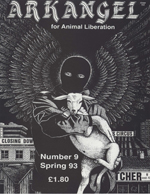
-
No Compromise, Periodicals
No Compromise #20-22
11.15.12 | PermalinkNo Compromise #20-22 (2003. Santa Cruz / San Francisco, CA)
No Comp scored another great year in 2003, this time by going deeper into practical instructions for campaigning, and also by examining the smaller stories in greater detail. While the high profile victories of anti-HLS activists were given their due, inspirational figures who had passed on were also given touching coverage. Issue #20 features articles on early Band of Mercy and Animal Liberation Front founder Sue Smith, and Sweden’s animal lib die-hard, Ake Soderlund. Similar examinations of our past, and the courageous figures whose shoulders we stand upon, pepper the 2003 issues. Of particular note is the article on Henry Hutto in issue #21.
2003 was also the year that Rod Coronado finally got off of probation and was allowed to participate in the movement again. His writings for No Compromise were as subversive and inspiring as ever, and it is easy to see why the government considered him such a threat.
As the year progressed No Comp moved to a magazine format and tightened their graphic design skills in response to Jake Conroy’s work on the SHAC USA newsletter. These glossy issues were excellent contributions to the movement, and it is a shame that in only a few more years NC would cease to exist altogether. These information (and inspiration!) packed issues are worth reading again to inform and encourage our current actions.


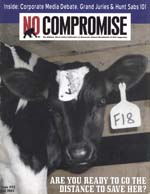
-
Periodicals
Facklan
10.11.12 | PermalinkFacklan (1996-1997 Umea, Sweden)
(Editors note: Facklan is a Swedish language publication that we bring to you due to its historical significance. Umea, Sweden produced one of the most remarkable animal liberation communities of the 1990s. Their influence was so strong that politicians in Sweden stated in national media that they feared animal rightists may collapse the countries infrastructure, both through sabotage and the conversion of the nations youth to veganism. Facklan was produced during the infancy of this tiny, but formidable uprising. One of our readers from Sweden has offered the summary that follows.)
Facklan (The Torch) was a Swedish magazine supporting the A.L.F. and
other radical groups fighting for the animals. It was released in four
issues in 1996-1997, during the biggest peak of A.L.F. activity in the
1990:ies in Sweden. The magazine was based in the northern city Umea,
which was well known for it’s number of vegans and animal rights
activists, militant (all fur shops closed in Umea as a result of the
A.L.F.) as well as non militant (almost 50 percent of the students at
some schools were vegetarians). Umea was often referred to as the
“Vegan Mecca”, and was also well known for bands promoting the animal
rights message, such as Refused.The first issue contained translated interviews etc from mainly UK and
US sources, and also had copied text from the Swedish militant
activist/anarchist manual Lila Svarta. Of course there was also a
diary of actions and addresses to imprisoned animal rights activists.
Two spreads were also dedicated to show mainstream media articles from
the time, also serving as a sign of the impact of the A.L.F. activity.During the later issues, more of the content was produced by Swedish
authors. In the second issue, there were a lot of more news from
Sweden and Finland, letters to the editor, communiques from the newly
started group The Wild Minks, a report from the riot against the fur
auction in Skara, a piece on the repression of Umea acitivists,
reviews of records under the headline “Activist Core”, and now also a
diary of actions focusing on Sweden. Content from abroad was still
used though, this time information from The Final Nail and on Barry
Horne. On the last page, a summary in English was also published for
the foreign readers.The third issue contained an exclusive interview with The Wild Minks,
the group that got most feared among the fur farmers, for liberating
minks and setting fire to properties of the fur industry. An address
list to all Swedish fur farms was published together with slogans such
as “What are you waiting for?”. There were critical articles directed
to hardcore posers, as well as articles about how animals that had
been liberated were doing in their new homes.The fourth and the last issue contained more articles like “How the
Raid was Done” – often raids that the police had said were so
professional it had to have been carried out by professionals from
abroad… One person urges for a Swedish A.L.F. Supporters Group, and
a spokesperson who could defend the actions openly. Til now, this had
only been done my anonymous activists in balaclavas, or by Emelie
E:son, an anonymous A.L.F. activist from the 1980:ies. Focus was also
targeted on groups trying to attack Peter Singer (who was at a visit
in Sweden during this period), there was a big report from the animal
rights campaigning and activity against the vivisection at the Umea
University, as well as more information directly from The Wild Minks.After the last issue, a Swedish A.L.F. Supporters Group was founded,
doing both work towards the media as towards prisoners and the animal
rights movement in general. They also released their own magazine,
later named Befriaren (The Liberator).



-
Arkangel, Periodicals
Arkangel #4,5,7
01.02.12 | PermalinkArkangel #4,5,7 (1990-1991. London, England)
Our posting of the complete Arkangel continues into the 90s with issues 4, 5, and 7. The omission of issue 6 is not an oversight- it was never printed. Arkangel was founded by Ronnie Lee, who was serving a 10 year sentence during the magazines early years, and edited by Vivien Smith, who found herself in a jail cell by the time issue #6 was scheduled for release. Sensing the possibility of shutting down this crucial publication, law enforcement in England ransacked the Arkangel office just before the layout of issue #6. It was lost to the ages, and with Vivien facing serious charges a new team of interim editors anonymously produced Arkangel #7, causing a slight decline in the publication’s overall quality.
The history covered by these three issues is tremendous. The death of Mike Hill, Animal Aid’s disastrous labeling of direct action as “terrorism,” and the return of the ALF Press Office are all reported upon, along with updates from groups around the world. Amidst the columns reporting on the actual work of activists though is a disturbing amount of debate, much of it centered on whether animal rights groups should allow participation by racists, nationalists, and separatists. The back and forth articles from one issue to the next mostly fail to recognize the most offensive nature of the argument – that there should even be an argument! It boggles the mind that anyone could see a benefit to taking on the baggage of these far right lunatics and their disgusting politics. During a decade where skinhead violence claimed the lives and dignity of so many it is particularly disheartening that some in our movement saw fit to offer these thugs a place at our table.

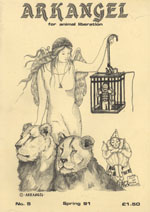

-
One-off publications
Keep Fighting: Three Interviews with Britain’s Animal Liberation Front Press Officers
05.20.11 | PermalinkKeep Fighting: Three Interviews with Britain’s Animal Liberation Front Press Officers (1996, Minneapolis, MN. USA.)
“In two buildings you have a number of dogs, and these dogs are being cruelly treated by humans. Another team of humans sledge hammer the doors down, go in, rescue the dogs, and take them to safety. In the first instance it is an old house and it’s an illegal dogfight and the team who sledge hammered the door are members of the RSPCA special investigation department and the local police…
In the second scenario, it’s a research laboratory and the dogs are beagles, and the humans who sledge hammered the door down are ALF activists….
Now I or someone else can argue until doomsday the rights and wrongs of legislation, but what it boils down to is until someone can explain the difference in the law to the dogs themselves, either both actions are morally right or both actions are morally wrong.”
-Robin Webb
Before Freeman Wicklund denounced tactics declared off limits by the state, he produced this fantastic little zine containing three highly influential interviews with Robin Webb, Ronnie Lee, and Robin Lane. Upon its release in 1996 copies of Keep Fighting were everywhere, and there was a noticeable increase in the quality of discourse on illegal direct action.
The arguments made in this booklet are convincing, and easily comprehensible but not simplistic. Your average, caring person without a masters degree or years of familiarity with activist verbiage can readily take the ideas discussed and share them with others, and many people did. We are happy that the face of underground resistance presented in Keep Fighting- intelligence, compassion, and a willingness to take risks for the benefit of others- is now accessible again for a new generation to read and share.
…
